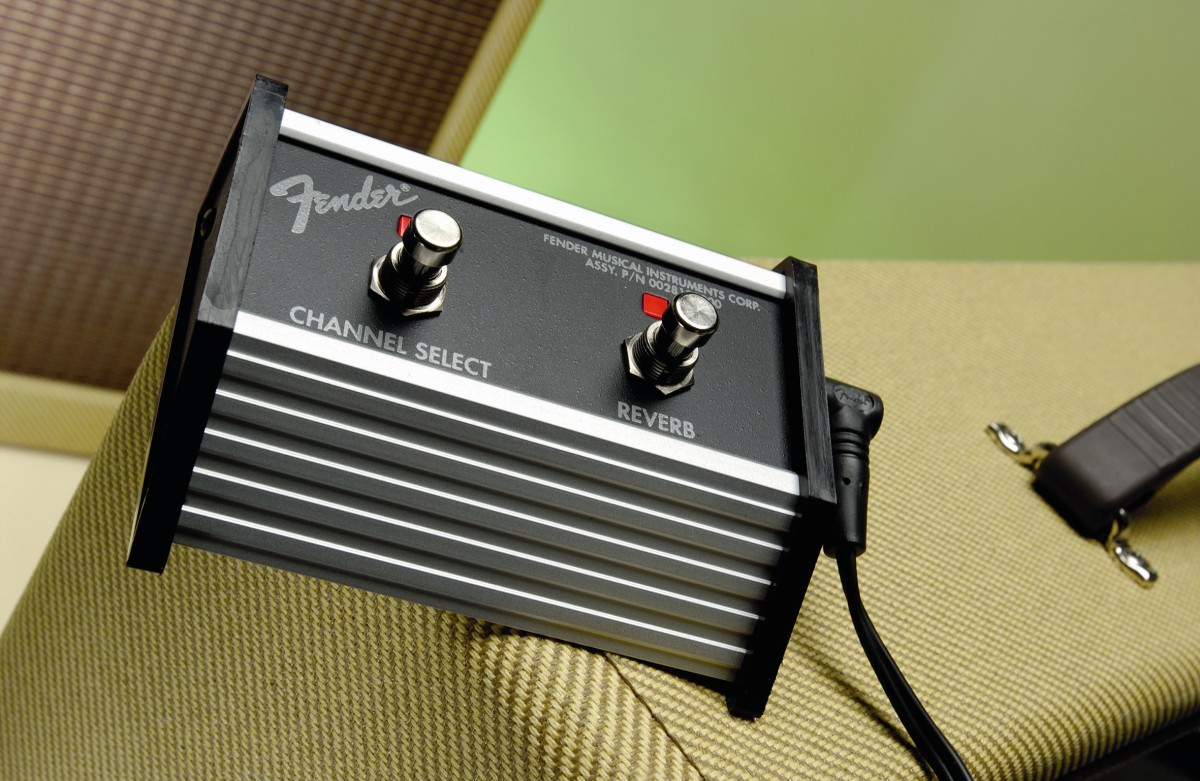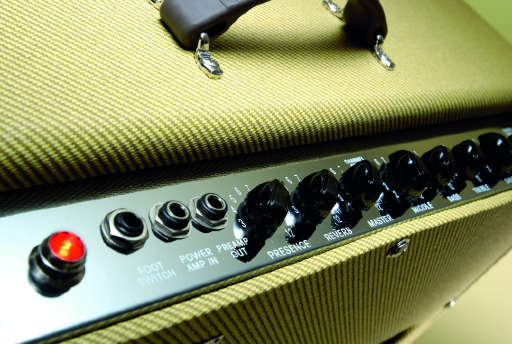MusicRadar Verdict
A reissue that improves on the original with bags of classic Fender tonality. Recommended.
Pros
- +
Chock-full of classic Fender tone. Excellent build standard. Low noise.
Cons
- -
The backwards writing on the control panel.
MusicRadar's got your back


Back in the early nineties, Fender's guitar amplification line was in danger of running out of steam. Following the closure of the legendary Fullerton facility and with it, the last of their hand-wired production models, Fender's lacklustre range at that time was losing market share to competitors who were already exploiting a trend for vintage tweed styling, combined with contemporary features.
Hence the debut of the original tweed Blues range in 1993, which saw Fender rightly asserting that if players wanted a real tweed amp, then its was the only name that should be on it. These amps have since evolved into the hugely popular Hot Rod range, with the addition of the 'More Drive' button. However, there are many players who still crave the fatter, warmer tone of the earlier version, and Fender has now reissued the two most popular circuits in the original format: the 40-watt Blues Deluxe and the 60-watt Blues Deville.
With all due deference to the company that basically invented the guitar amplifier, original Blues Deluxe wasn't among the best-made amps that Fender ever produced. Like most other volume manufacturers, in the early nineties, Fender was struggling to find consistent and reliable valves, and this caused many units to suffer from excessive mains hum and erratic performance.
UK models were also prone to overheating mains transformers, which often exposed dry solder joints or other component weaknesses over time. However, a lot of electrons have passed under the bridge since then and the build standard of this reissued version is considerably improved.
The tough-ply cabinet is neatly covered in real tweed cloth, which combined with the chrome control panel and chicken-head knobs certainly evokes the vintage Fender vibe that's still so popular today. The un-lacquered tweed covering may be a little bright for some eyes, but for those who want a more worn look, it's also thankfully very easy to 'relic', using thinned matt varnish to dull and darken the fabric to taste.
Inside the steel tray chassis, most of the electronics are contained on two robust circuit boards which are double-sided and through-plated; the valves are chassis mounted, with long-tailed bases connecting to the PCBs, and all of the wiring is neatly bundled and tied back.
The control panel features dual high- and low- sensitivity inputs feeding either a single volume control for the normal channel, or drive and master volume controls for the overdrive channel. Both channels share a standard three-band EQ, as well as presence and level controls for the amp's built-in reverb spring, while a pair of sockets labelled preamp out/power amp in serve as a useful series effects loop.
There's also a normal/bright switch that boosts high-frequency response - a handy feature for guitars with high-output humbuckers. Apart from mains and loudspeaker connections, all the controls, switches and jacks are mounted on the top surface for easy access, including a socket for the supplied two-button footswitch, although to get at the valves it's easier to remove the rear panel, which has a CE-approved steel grille protecting the 6L6s from clumsy fingers.
It has to be said that one annoying original feature is the way the layout and control labels oppose each other - standing behind the amp, the writing is the right way up but the control functions are laid out backwards to the accepted norm of input on the left, followed by gain, tone, master, mains and standby.
Viewed from in front, the controls are the right way round, but now the writing is upside down. It may be traditional, but it's still awkward. Thankfully, the control layout is straightforward and after a few minutes most players will be able to navigate it blindfolded.
In use
Hear the Blues Deluxe reissue here in combination with a Gretsch Billy-Bo and old Ibanez Tube Screamer:
Switched on, one very encouraging characteristic is that the amp is virtually hum- and hiss-free. For several years now, all Fender valve products have been fitted with matched output valves supplied by Groove Tubes, and we're in no doubt this has been a major step forward in improving consistency and reliability, as well as tone.
Lack of noise is one sure sign of a happy circuit that's going to sound good, and the Bluies Deluxe dosen't disappoint - the clean channel is pure classic Fender, with sweet highs that can cut through without sounding shrill. The mid-range is warm but not overly peaky, and the bass is round and full.
Plug in your favourite Fender guitar and you've got the full-on experience of what a great clean sound is all about. Use this channel with the volume control over the halfway mark and you get that classic characteristic Fender bite which demands that you dig in and hit the strings harder. It's a great tone which players used to controlling an amp from the guitar will make the most of.
The lead channel is also superb. The lack of the modern 'more drive' feature should not be seen as a drawback, as the smooth overdrive this amp generates is still plenty for most tastes. The best approach to wringing the hottest lead tones is to run the master volume as high as possible: this helps achieve an ideal balance between preamp distortion and power amp drive.
Use a Stratocaster or Telecaster with this set-up, and you'll get a singing solo voice with plenty of punch and sustain - without the somewhat fizzy tone the Hot Rod's 'more drive' feature can sometimes tend towards. The EQ defnitely favours single-coil guitars - the clang of a Telecaster's bridge pickup is faithfully captured, as is the 'quack' from the Strat's two and four switch positions.
Guitarist is the longest established UK guitar magazine, offering gear reviews, artist interviews, techniques lessons and loads more, in print, on tablet and on smartphones Digital: http://bit.ly/GuitaristiOS If you love guitars, you'll love Guitarist. Find us in print, on Newsstand for iPad, iPhone and other digital readers
Brace yourself: Bryan Adams didn’t buy his first real six-string in a five and dime
“Nobody listens to one genre. I literally don’t know anybody who listens to one genre. You can be a fan of so many different artists at once”: Laufey on what Gen Z can teach the rest of us about how to appreciate music
Bon Iver - ranked: from Sable, Fable to For Emma, Forever Ago










